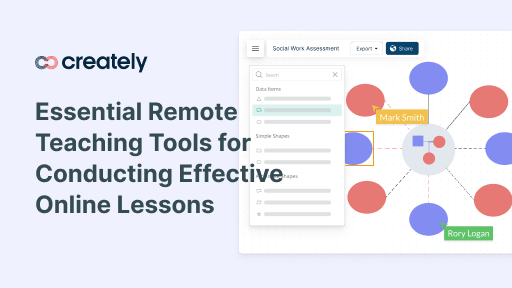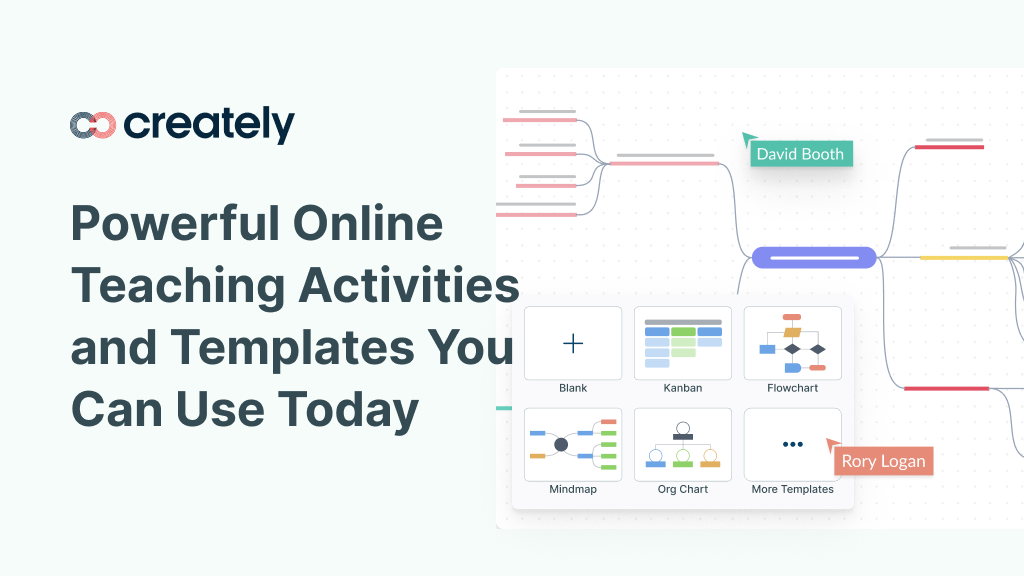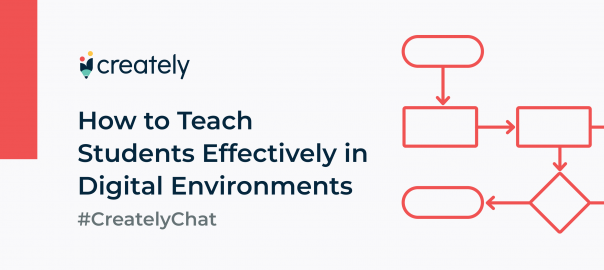Traditional forms of teaching around the world are changing rapidly with the advancement of technology. Even in physical classrooms, technology has taken on a bigger role, changing how lessons are delivered and received.
While there are numerous teaching methods, most of the traditional methods used in class can be applied equally efficiently online. However the teaching method you select will change based on your teaching philosophy, objectives, subject area, and classroom demographics.
In this post, we’ll list down x effective online teaching methods that’ll help simplify the delivery of your virtual lessons.
Online Teaching Methods
Listed below are some of the most effective methods of online teaching.
Presentations
Presentations, like in the physical classroom, are one of the most common methods of online teaching. This technique helps make a more significant impact on students – most of whom are visual learners – than a teacher simply relaying information out of a textbook.
Most importantly, presentations allow you to incorporate visuals (images, GIFs, videos, etc.) which makes it easier to deliver and comprehend complex information and data while making the lesson more engaging. Plus you can also share your presentation with the students after the lesson for revision and studying.

Here are a few presentation tools to get started with
Online, presentations are more effective when delivered over video conferencing with a tool like Zoom or Google Meet.
Resources
Jazz Up Your Presentation: 6 Ways to Put an End to Ugly Charts and Graphs
Online Whiteboard
Online whiteboards have risen as a popular choice to virtually emulate the in-person classroom experience shared between teachers and students. They offer an infinite canvas, shape libraries to create different diagrams and charts, pre-made templates, sketching, typing, image import options, etc.
Unlike the traditional whiteboards, they also let you digitize the content created, hence allowing you to re-share them and refer to them at a later time. You can also collaborate with students on the same canvas in real-time which paves the way to
- Carry out assignments
- Brainstorm around lessons
- Mind mapping
- Do interactive exercises such as quizzes
- Review homework and leave feedback
Find out more about how to successfully use an online whiteboard for teaching.
Live Online Classes
Technology has made it straightforward to deliver lectures online even if you are not in the same room as the students, replicating many of the elements of face-to-face interaction.
Using video conferencing tools you can connect and communicate with students across the globe to deliver lessons. Incorporating an online whiteboard, you can make the classes even more engaging.
Lectures tend to put students in a passive role. Therefore to keep students engaged throughout the class online;
- Be prepared by outlining the content of the lesson
- Ask questions during and after the lesson and leave time for students to answer
- Carry out discussions around the topic and encourage students to participate actively
- Make use of graphic organizers, images, posters, videos, visuals, etc.
- Break down the main topic into sub-parts which will allow you to deliver the lecture in smaller chunks making it more effective in terms of keeping the students focused and engaged
- Set clear guidelines for online class etiquette for students to maintain
Pre-Recorded Video Lectures
The benefit of pre-recorded lectures, as opposed to the live ones, is that the former allows the students to learn at their own pace at any time without the presence of the teacher. It also gives them material to go over during revision.
The teacher or instructor, on the other hand, can use the videos to avoid repetitive teaching between different classes.
To create effective pre-recorded lectures;
- Start with a script. Outline the talking points and what should go on each slide.
- Practice as necessary. Unless you are confident enough to do it in one go, rehearse what you will be saying prior to recording.
- Keep it short. If the video is longer than 20 minutes, consider breaking it up into smaller videos. This will not only come in handy when uploading them online but in case you need to replace the content with new information, it’ll be easier to re-do a few minutes video than an hour-long one.
- Have everything ready before recording. Make sure that you are in a place devoid of distracting noises and backgrounds, and that your script and props are in place.
- If you are recording your screen, make sure to have closed unnecessary tabs and apps that may send you notifications.
- Maintain good eye contact with the camera and a tone you would use in a normal one-on-one conversation
Flipped Classroom
The flipped classroom has become one of the most popular teaching methods in education during the past few years.
It entails a strategy opposite to the traditional class format; here the students are required to review class material prior to the actual lesson, hence reserving actual in-class time to put what they have learned into test with teacher-guided activities such as debates, problem-solving, in-depth discussions, quizzes, etc.
Videos have become a core element in the flipped classroom model. While many teachers create videos of their own, some also use videos created by other teachers. Video-sharing platforms such as YouTube can be utilized to share these among students.
Some of the other effective techniques for the flipped classroom include,
- Online quizzes – help students self-regulate what they have learnt and further improve their comprehension of the subject
- Polls – help students reflect and analyze what they have learned by polling their own choices
- Infographics – increase student engagement and enhances memory
- Mind maps or word clouds – allow students to brainstorm around topic areas and develop their thinking skills
Game-Based Teaching
Game-based learning is a popular technique used to improve student engagement and retain attention. This approach helps reduce student anxiety and increase their involvement, especially when teaching complex concepts. It also paves the way for weaker students to develop their competences by interacting actively with their classmates.
And in online teaching, games help close the gaps in the interaction between face-to-face learning and online learning. Depending on the game you select, here are a few tips to keep in mind when carrying it out online,
- Ensure that all students in the virtual classroom have access to the same set of data. You can share your screen or communicate them to your audience using a video conferencing tool
- Use the chat option to take down concerns and questions of students and clarify and you can answer them live
- Allow students time to reflect their answers and discuss them with other group members by breaking down the game into subsequent periods
- Allow students to carry out discussions using chat platforms such as WhatsApp, Skype, Slack, Facebook, Zoom breakout rooms, etc.
Class Blog
A blog can be a great place for students to share what they have learned in the form of in-depth articles. Students can work on blog posts individually or in groups. It’s a great strategy to improve students’ research skills and encourage them to explore self-learning.
The teacher can also use the blog as a platform to share learning material for the lessons.
Live Chatting
Live chatting is another great way to replicate the real-time discussions that take place in the classroom. Platforms such as Slack, WhatsApp, Facebook Messenger, Skype, etc. allow students and teachers to communicate and brainstorm around lessons. The chat itself will provide the students with information for revising before exams or assignments.
Make sure to set clear guidelines to ensure that all students get an equal chance to communicate their ideas and pose their questions.
Discussion Boards and Forums
These tools provide students the space to share what they have learned or what they want to know more about with others in the classroom including the teacher.
You can maintain different discussion boards for individual lesson topics, so it’ll be more organized. You can create one easily with an online visual workspace like Creately and share it with all students with one public edit link giving everyone quick access.
You can also create separate Slack channels, Facebook groups, or Whatsapp groups for forum discussions.
Any Other Online Teaching Method?
Online teaching has paved the way for new models of teaching and learning. With the world-wide school closure caused by COVID-19, the process only has accelerated. As students and teachers explore new ways to deliver and receive lessons virtually, we hope these techniques will help you explore something new and do it more effectively.
What other online teaching methods have you incorporated into your virtual classroom? Let us know in the comments section below.
This post is a part of Creately’s series on remote teaching. More resources you would find useful include,
7 Effective Remote Teaching Best Practices
Essential Remote Teaching Tools for Conducting Effective Online Lessons
The Ultimate List of Visual Teaching Strategies
The Ultimate List of Graphic Organizers for Teachers and Students
The Ultimate List of Visual Creative Thinking Techniques
The Ultimate Guide to Visual Note-Taking for Students and Teachers




